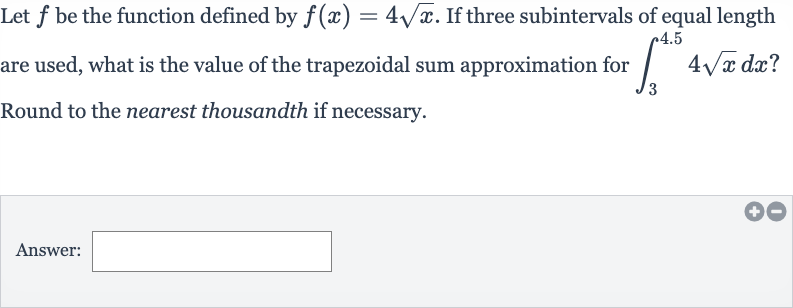Full solution
Q. Let be the function defined by . If three subintervals of equal length are used, what is the value of the trapezoidal sum approximation for ? Round to the nearest thousandth if necessary.Answer:
- Determine Subinterval Width: To use the trapezoidal rule, we first need to determine the width of each subinterval. The interval from to has a length of . Since we are using three subintervals, each subinterval will have a width of .
- Calculate Function Values: Next, we need to calculate the values of the function at the endpoints of each subinterval. These points are , , , and . We will calculate for each of these -values.
- Apply Trapezoidal Rule:
- Plug in Values: Now we apply the trapezoidal rule, which is given by the formula:where and are the start and end points of the interval, and is the width of each subinterval.
- Perform Calculations: Plugging in the values we have:
- Round the Result: Now we perform the calculations:
- Round the Result: Now we perform the calculations:We round the result to the nearest thousandth as instructed:

